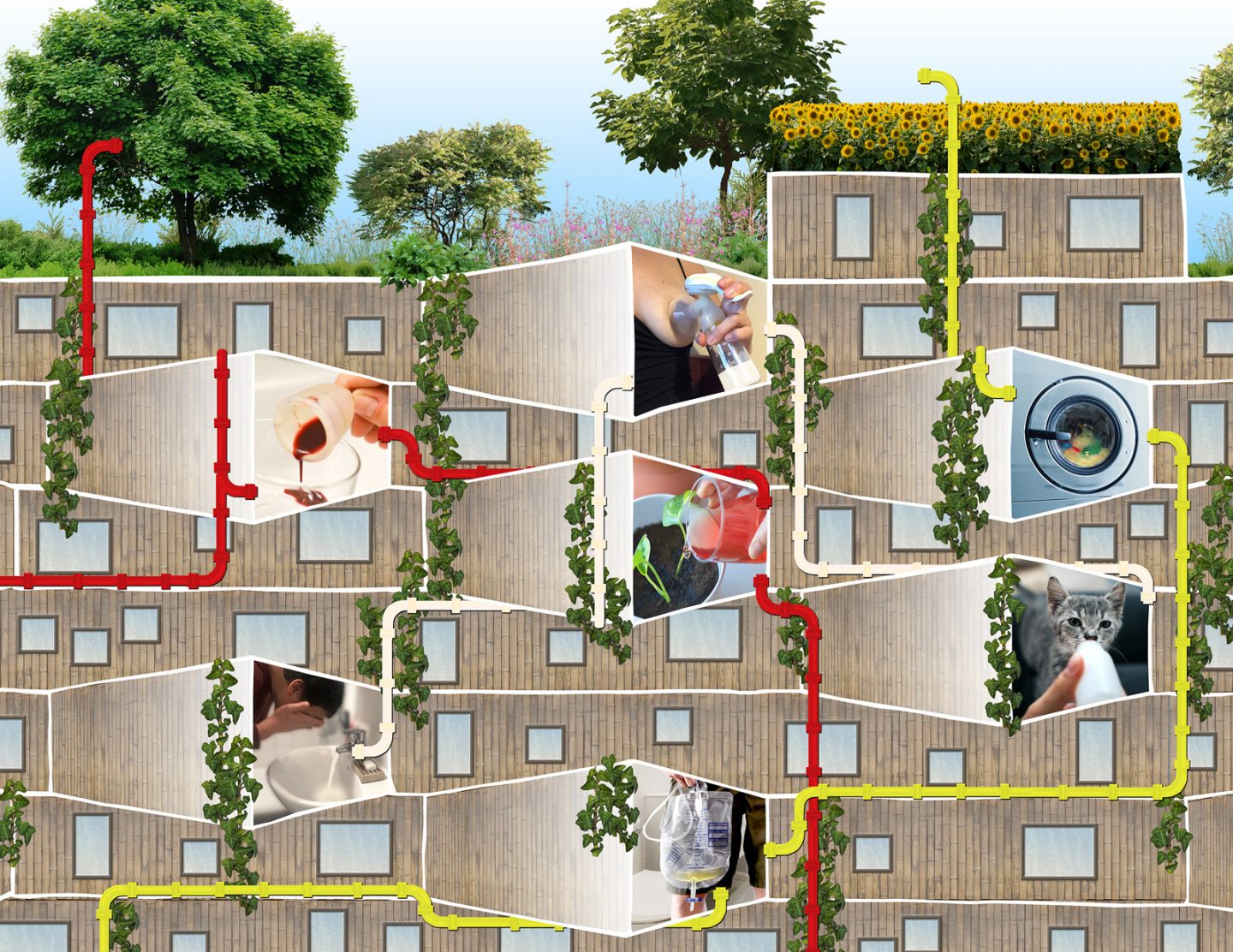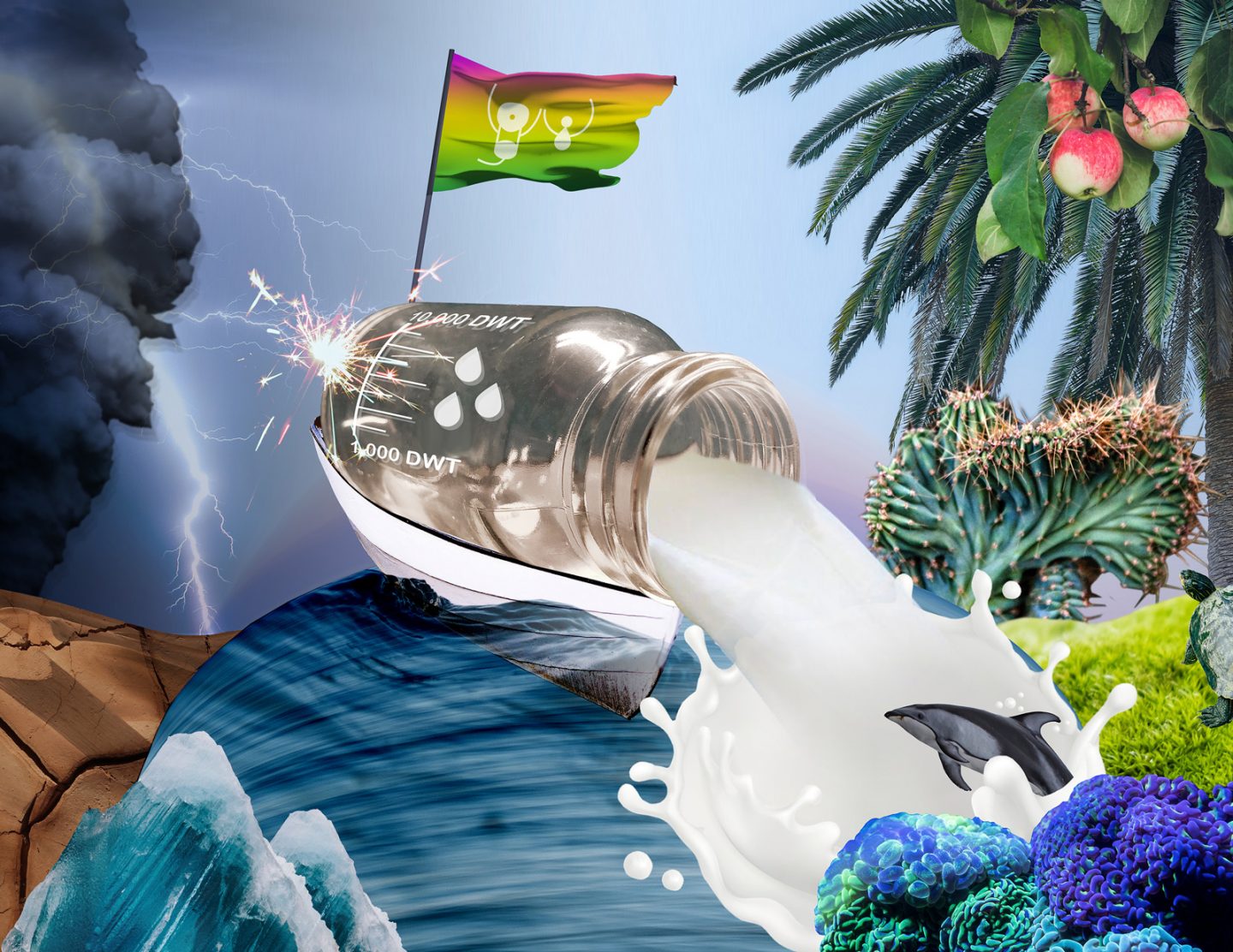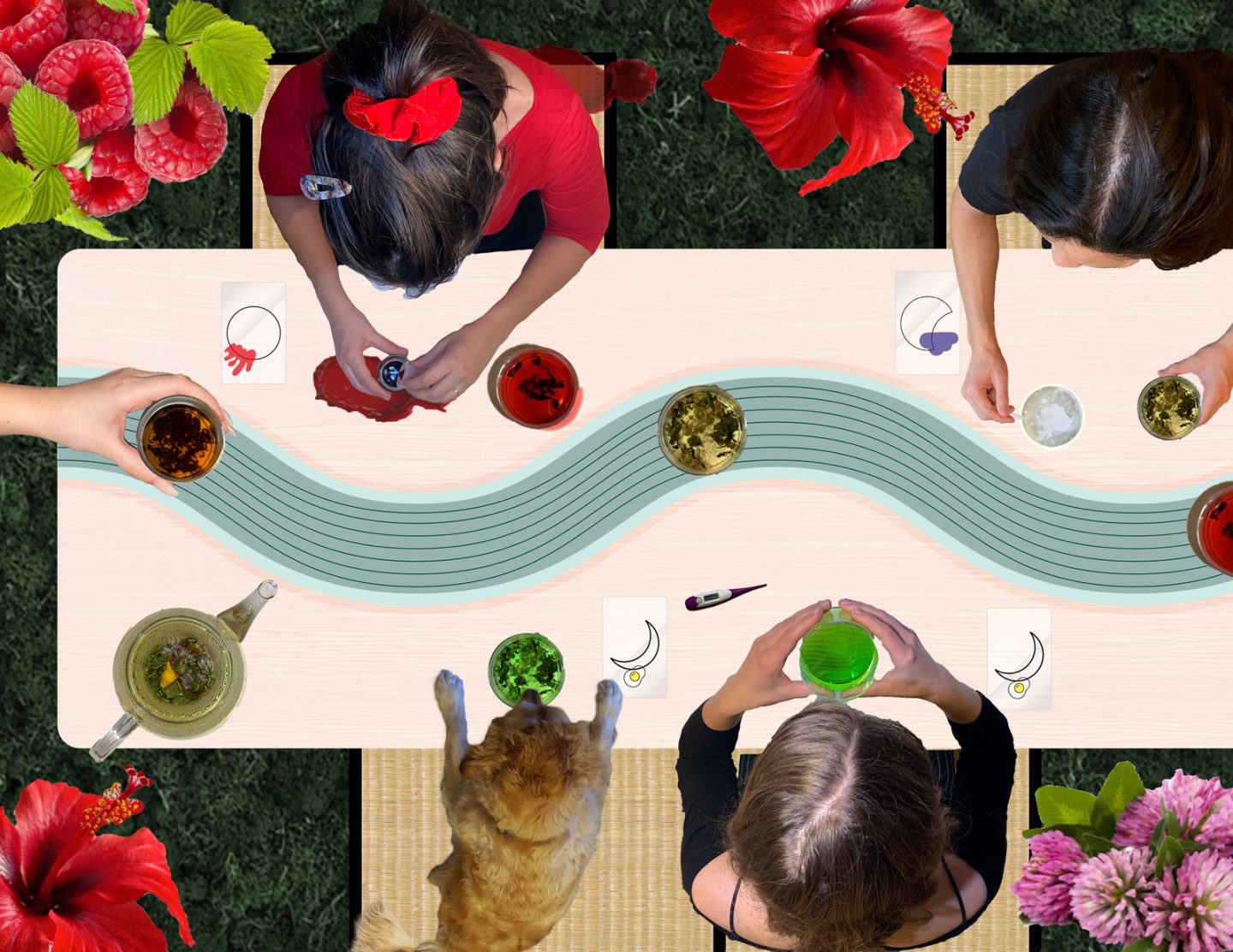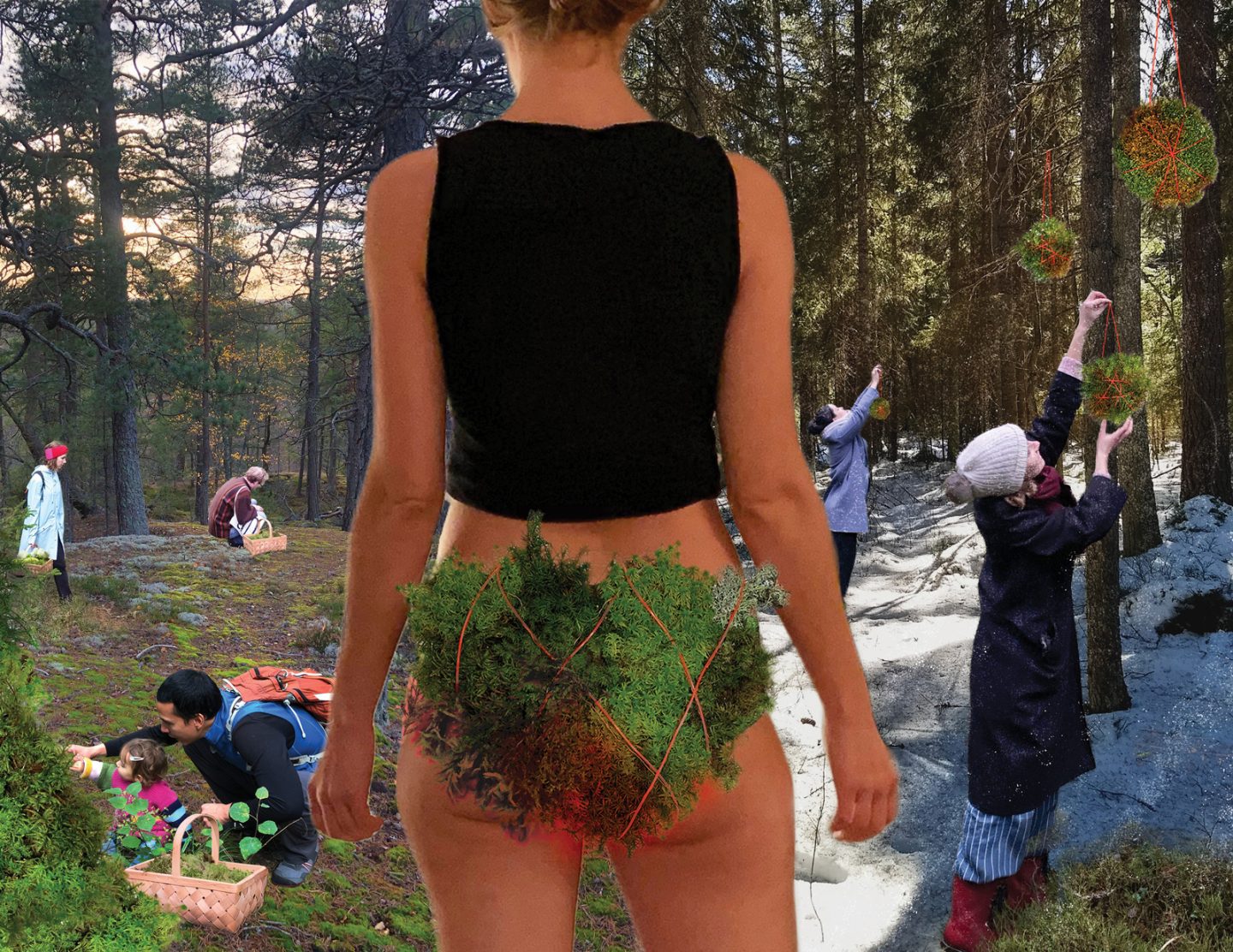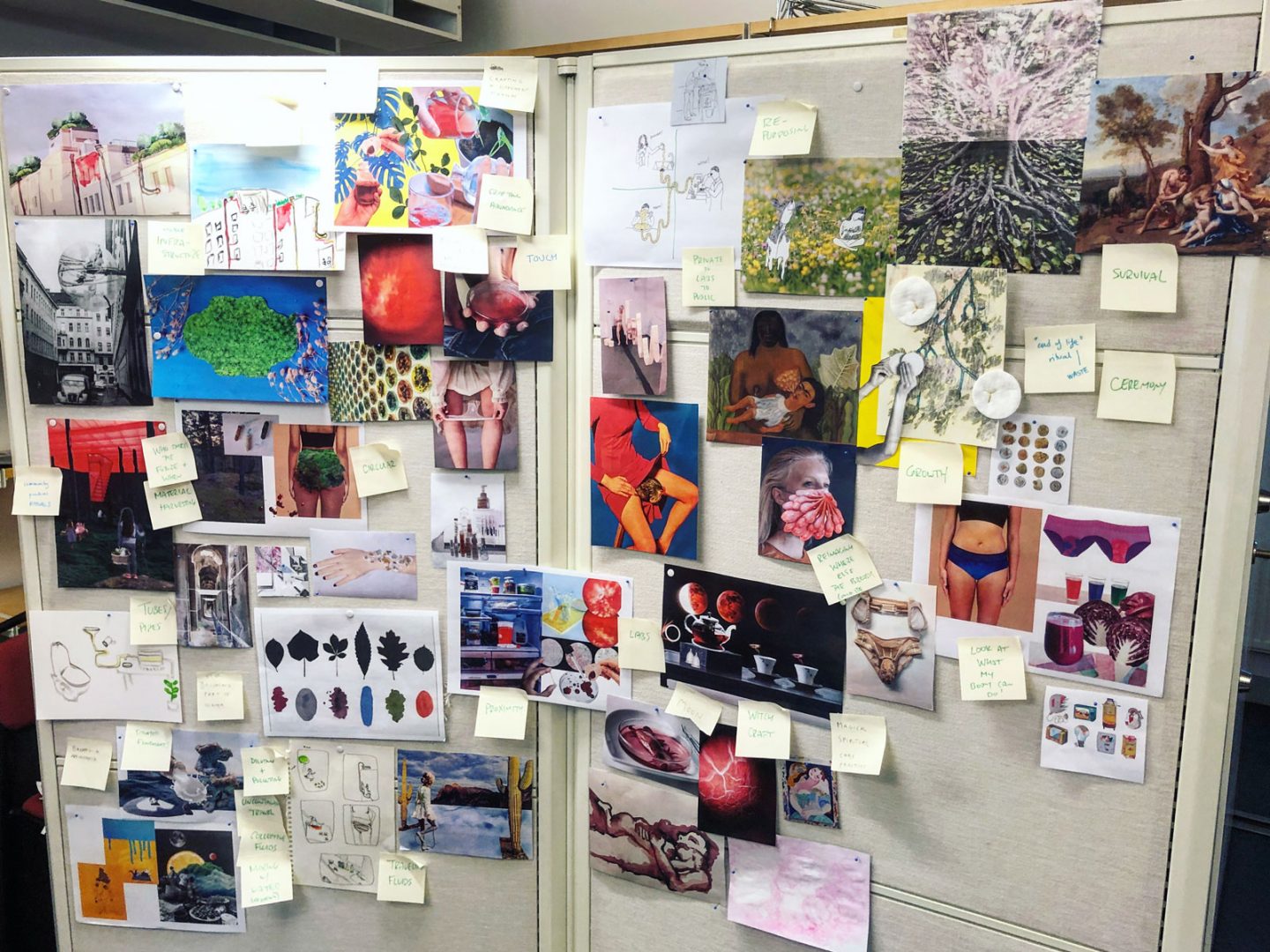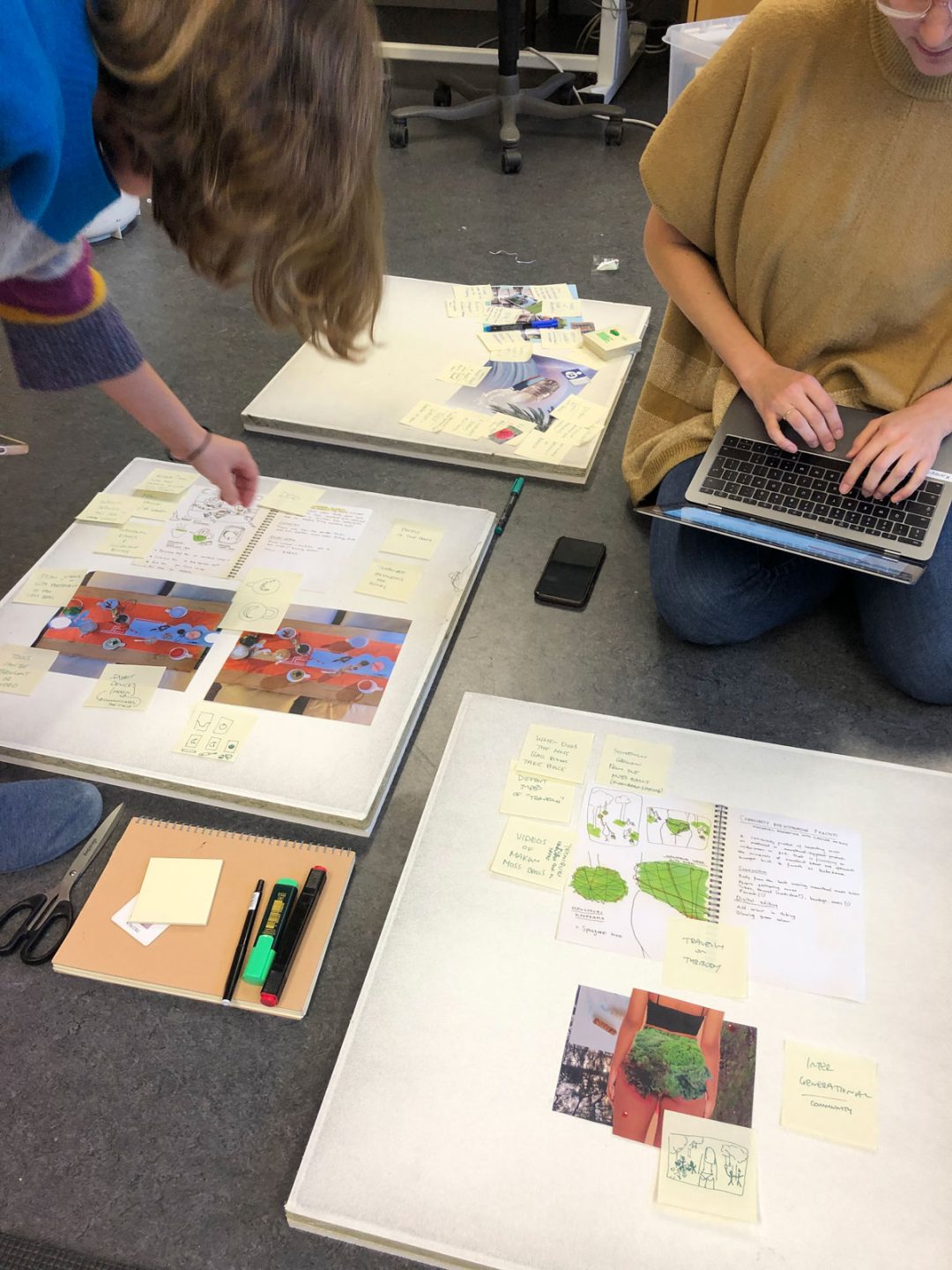This project explores human bodily fluids for more-than-human collaborative survival. We present four utopian fabulations in which urine, menstrual blood, and breast milk are designed with beyond the scale of a singular human body. In collaboration with Marie Louise Juul Søndergaard and Nadia Campo Woytuk.
Exposed industrial pipes ebb and flow along a block of modular housing. They pulse in red, yellow, and cream as menstrual blood, urine, and human milk are transported within and from different domestic containers. The colors of the moving fluids are also in motion as they shift in hue, saturation, and opacity as a dynamic palette of pipes. From this deliberate exposure, change and variation are visible and noticeable.
In one scene, a menstrual cup is emptied. The blood and menses are diluted with water for plant nourishment inside another home while also floating upwards to fertilize a community rooftop garden. In another scene, a catheter of urine freely couples with the structural tubing, which distributes the effervescent liquid to sustain vertical gardens and cleanse clothes in a washing machine. Human milk is generously collected in another scene to carefully nurture a kitten and lavishly refresh a man.
These scenes are mundane yet spectacular. These scenes are glimpses of bodily ways of knowing and maintaining the commons.
The infrastructure continues. Fluids wander further, much further, beyond these bodies of housing and into bodies of land, bodies of water, and bodies of thought.
They are resources for plants, animals, and humans.
They are provocations for plants, animals, and humans.
Where else do bodily fluids travel? What other scenes are out of sight? What other scenes are ways of knowing? What else does this fluid infrastructure challenge and maintain? What else challenges and maintains this fluid infrastructure?
A tanker of human breast milk travels across an ocean. It flies a flag for universal breastfeeding and no-breastfeeding as this abundance of milk is diverse in origin and intent. Its destination is unclear, yet its orientation is obvious. In the wake of a fierce storm amid arid landscapes and melting icebergs, lightning strikes the nomadic milk bank. From the resulting spill, marine life and lush gardens flourish. Paradise is not a white beach, but instead a diverse mess of situated growth. Endangered and non-endangered species thrive in unexpected dimensions and configurations.
The ocean swells forward and backward in a circular motion. Fluids leak, nutrients drift, bodies mingle, boundaries blur. It is unclear what bodies are fluids, and what fluids are bodies.
There are conflicting narratives in this interspecies worlding:
Spilled breast milk is catastrophic if interpreted as lost labor and unrequited love. In this way, it is an apocalyptic narrative in which milk represents human exceptionalism.
Spilled breast milk is generous if interpreted as ongoing labor and open love. In this way, it is an ordinary narrative in which milk represents human accountability.
The lightning is exceptional and accountable. The spilled milk is accidental and intentional.
How are bodily fluids responsive and responsible? Through a yielding to bodily change? Or through a permeation of bodily boundaries? How are fluids bounded in collaboration? And how do bodies change in surviving?
Human and canine menstruators commune in a garden whereby locally grown herbs are used to brew tea particular to a menstrual cycle. In this ritual of care, participants begin their human-food interaction by contributing biodata from a vessel of menstrual blood, a basal thermometer, or a petri dish of saliva. Tools of collection are provided or brought as part of an ecology of menstrual experiences that accommodates and encourages “touching”. Biodata can be publicly gathered at the table, or privately prepared in advance and then brought. From the biodata, a lunar analyzer draws upon the current phase of the moon to interpret menstrual cycle desires for the personalized crafting of tea.
Once brewed, the ceremony host relinquishes each herbal concoction to the gathering via a moving band that traverses the table. Although a particular brew is intended for a particular menstruator, as the fluids travel within the collaborative space, tea for others might be observed, shared, mixed, swapped, or gifted out of curiosity and generosity.
Individual rituals mingle with collective rituals. Human rituals mingle with animal rituals. Earthly rituals mingle with interstellar rituals.
In this magical discharge ritual, there are no shadows, and without shadows movement is indistinct and directionless. This ceremony has no beginning or ending, and instead has many beginnings and endings like the moving band that offers ongoing opportunities for shared rituals.
What are the bodily fluids? Those that are collected or those that are concocted? And what bodies do these bodily fluids belong to? Those that touch or those that are touched?
A community gathers moss as absorbent material to make menstrual underwear ecologies. This vibrant wearable is bound together with rope and tubing that allows for blood to travel over, around, and against human skin. The bindings are lively veins that nourish the moss. Following a menstruation period of bodily change – such as menarche, a monthly cycle, menopause, or a lack of menstruation due to pregnancy or contraception – the moss is given back to the forest and ritually hung as kokedama – ornamental balls of soil covered with moss – for new and continued flourishings. These cycles are ritualistically repeated as reciprocal acts of care between human communities and local ecologies.
This community menstruation practice is intergenerational whereby a non-menstruating parent and a future menstruator might gather moss for a menstruating parent; or a non-menstruator might wear moss for a hopeful menstruation; or a former menstruator might hang moss for a future menstruator. Like humans, forests are also intergenerational.
This practice is for learning about cycles through harvesting and cultivating, wearing and adorning, acknowledging and appreciating. Like forests, humans also learn.
Bodies move. Seasons change. Fluids move. Bodies change. The forest is never still, and bodily cycles are simultaneously fast and slow, predictable and erratic, in sync and at odds.
What are the bodily origins of materials? What are the materials origins of bodies? Does moss only grow where blood flows? Does blood only flow where moss grows?
Publications & Creative Outputs
Karey Helms, Marie Louise Juul Søndergaard, and Nadia Campo Woytuk. 2021. Scaling Bodily Fluids for Utopian Fabulations. Nordic Design Research Conference (Nordes 2021, Exploratory Paper), Kolding, Denmark.
Nadia Campo Woytuk, Marie Louise Juul Søndergaard, and Karey Helms. 2021. Scaling Bodily Fluids for Utopian Fabulations through Collage-Making. Uroboros Festival, Virtual Workshop.
